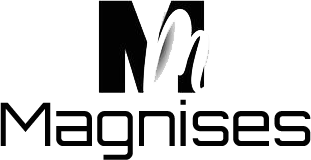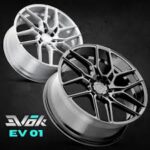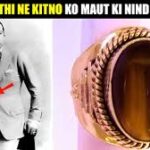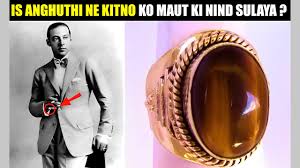Introduction
Nose studs have adorned faces for centuries, symbolizing cultural significance, beauty, and personal expression across different traditions worldwide. Their appeal remains undiminished, as people continue to wear them for fashion, spiritual beliefs, or sentimental reasons. The nose stud, small yet powerful, adds charm, elegance, and individuality to anyone who chooses to wear it. This article delves into the fascinating history, styles, cultural importance, and maintenance of nose studs, offering insights into why they remain so timeless.
The History of Nose Studs
The practice of wearing nose studs dates back over 4,000 years, with its origins rooted in ancient Middle Eastern and South Asian cultures. Historical records suggest that nose piercings were common among the Bedouins, Berbers, and Indian communities, serving as symbols of wealth, status, and social standing. Ancient scriptures from India reference nose ornaments, emphasizing their connection to Ayurveda and holistic well-being. Over time, nose studs spread across civilizations, making their way into Western societies through globalization, trade, and cultural exchange. Today, they are embraced worldwide, transcending boundaries of tradition and modernity.
Symbolism and Cultural Significance
Nose studs hold deep cultural and symbolic meaning, varying from region to region, reflecting heritage, customs, and personal identity. In India, they are traditionally worn by married women, symbolizing marital status, prosperity, and fertility, often accompanied by intricate jewelry pieces. In Middle Eastern cultures, nose studs signify familial wealth and status, passed down through generations as heirlooms. Among the youth in Western societies, they represent self-expression, rebellion, and the breaking of conventional norms. Their significance has evolved with time, yet their essence remains intact, bridging past traditions with modern fashion trends.
Different Types of Nose Studs
Nose studs come in diverse styles, materials, and designs, allowing individuals to choose pieces that best match their preferences. The most common type is the L-shaped nose stud, offering comfort, ease of use, and a secure fit for everyday wear. The bone stud features a small ball at the end, keeping it in place without additional securing mechanisms. The screw stud provides extra security, ideal for individuals leading active lifestyles or seeking longevity in their piercing choice. For those looking for versatility, the hoop or ring stud offers an edgier and more expressive look. Materials range from gold, silver, titanium, and surgical steel, ensuring options for people with sensitive skin or specific aesthetic preferences.
The Growing Popularity of Nose Studs
Fashion trends continue to embrace nose studs, making them a staple accessory for individuals across different age groups. Celebrities, influencers, and fashion icons frequently showcase nose studs, influencing their resurgence in mainstream fashion. The accessibility of nose piercings in professional environments has also contributed to their growing popularity, with many companies adopting a more relaxed stance toward body jewelry. The versatility of nose studs allows wearers to experiment with designs, gemstones, and placements, creating unique looks that reflect personal tastes and lifestyles. With fashion trends evolving constantly, nose studs remain a timeless adornment, seamlessly blending with both traditional and contemporary styles.
Choosing the Right Nose Stud
Selecting the perfect nose stud involves considering factors such as personal style, skin sensitivity, and daily activities. For individuals with sensitive skin, hypoallergenic materials like titanium or surgical steel help prevent irritation and allergic reactions. Gold and platinum studs exude luxury and durability, making them ideal for special occasions or long-term wear. When choosing a nose stud, it is essential to consider the piercing type, as some piercings require specific stud shapes for optimal healing. Additionally, gemstone embellishments add a touch of elegance, with diamonds, sapphires, or opals enhancing the beauty of the jewelry. Finding the right balance between comfort, durability, and aesthetics ensures a satisfying and stylish nose piercing experience.
How to Care for a Nose Stud
Proper maintenance is crucial for ensuring that a nose stud remains clean, infection-free, and in good condition. Cleaning the piercing site with a saline solution or antiseptic solution prevents bacterial buildup and reduces the risk of irritation. Avoiding unnecessary touching or rotating of the nose stud helps prevent infections and allows the piercing to heal naturally. Choosing high-quality materials for nose studs minimizes allergic reactions, ensuring prolonged comfort and wearability. If signs of infection, redness, or discomfort occur, seeking professional advice from a piercer or dermatologist is essential for proper care. Regularly checking and tightening the nose stud prevents accidental loss, ensuring longevity and security in wearing the jewelry.
The Emotional and Personal Connection
Beyond fashion and tradition, nose studs often carry deep sentimental value, representing significant milestones, memories, or self-identity. Many individuals associate their nose studs with personal achievements, life-changing experiences, or meaningful relationships. Some choose to wear nose studs as a form of self-empowerment, embracing individuality and self-expression in a world that values uniqueness. Others inherit nose studs as heirlooms, passing them down as cherished symbols of family heritage and connection. The emotional attachment to a nose stud often goes beyond aesthetics, making it an integral part of one’s personal journey and identity.
Nose Studs in the Workplace
The acceptance of nose in professional environments has significantly increased, reflecting the changing attitudes toward self-expression and individuality. Many corporate settings now recognize personal adornments, allowing employees to express themselves through piercings while maintaining professionalism. Employers value skills, work ethic, and contributions more than personal style choices, leading to greater acceptance of nose studs in diverse industries. However, certain conservative workplaces may still impose restrictions, requiring employees to wear subtle or discreet nose studs. Understanding workplace policies and choosing appropriate nose studs ensures a balance between self-expression and professional decorum.
Conclusion
Nose remain a timeless and versatile form of self-expression, carrying deep cultural significance, sentimental value, and fashion appeal. Their history spans centuries, intertwining tradition with modernity, making them a staple adornment across different cultures. Whether worn for aesthetic purposes, symbolic meaning, or personal significance, nose studs continue to captivate and inspire individuals worldwide. As trends evolve, nose persist as a cherished accessory, transcending generations and adapting to contemporary styles. Their enduring charm and elegance make them an iconic and meaningful piece of jewelry, celebrating individuality and beauty in all its forms.
FAQs About Nose Studs
1. How long does it take for a nose piercing to heal completely?
A nose piercing typically takes around 4 to 6 months to heal completely, depending on individual healing processes.
2. Can I change my nose stud immediately after getting a piercing?
It is advisable to wait at least 3 to 4 months before changing a nose stud to avoid irritation.
3. What material is best for sensitive skin when choosing a nose stud?
Hypoallergenic materials like titanium, surgical steel, and 14K gold are best for individuals with sensitive skin.
4. Are nose studs appropriate for all workplaces?
While many workplaces accept nose studs, some conservative environments may require subtle or discreet options.
5. Can I remove my nose stud for a few days without the piercing closing?
Nose piercings close quickly, so removing a nose stud for an extended period may result in closure.
6. How do I clean my nose stud properly?
Clean your nose stud using a saline solution or antiseptic rinse, avoiding harsh chemicals or alcohol-based products.
7. What should I do if my nose piercing becomes infected?
If you notice redness, swelling, or pus, seek professional medical advice and avoid removing the stud immediately.
8. Can men wear nose studs, or are they only for women?
They are gender-neutral accessories, and anyone can wear them as a form of self-expression and style.
9. Do nose studs cause pain during the piercing process?
The pain level varies by individual, but most people experience a slight pinch that subsides quickly after piercing.
10. What is the difference between a nose stud and a nose ring?
A nose is a small, fixed piece of jewelry, whereas a nose ring encircles the nostril for a different aesthetic.
Nose, rich in history and personal significance, continue to shine as a timeless adornment, celebrating individuality, culture, and beauty.











